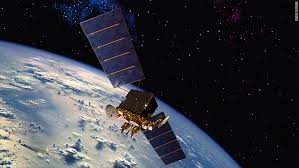
Breaking News
 2 Hours of Retro Sci-Fi Christmas Songs | Atomic-Age Christmas at a Snowy Ski Resort
2 Hours of Retro Sci-Fi Christmas Songs | Atomic-Age Christmas at a Snowy Ski Resort
 Alternative Ways to Buy Farmland
Alternative Ways to Buy Farmland
 LED lights are DEVASTATING our bodies, here's why | Redacted w Clayton Morris
LED lights are DEVASTATING our bodies, here's why | Redacted w Clayton Morris
Top Tech News
 Travel gadget promises to dry and iron your clothes – totally hands-free
Travel gadget promises to dry and iron your clothes – totally hands-free
 Perfect Aircrete, Kitchen Ingredients.
Perfect Aircrete, Kitchen Ingredients.
 Futuristic pixel-raising display lets you feel what's onscreen
Futuristic pixel-raising display lets you feel what's onscreen
 Cutting-Edge Facility Generates Pure Water and Hydrogen Fuel from Seawater for Mere Pennies
Cutting-Edge Facility Generates Pure Water and Hydrogen Fuel from Seawater for Mere Pennies
 This tiny dev board is packed with features for ambitious makers
This tiny dev board is packed with features for ambitious makers
 Scientists Discover Gel to Regrow Tooth Enamel
Scientists Discover Gel to Regrow Tooth Enamel
 Vitamin C and Dandelion Root Killing Cancer Cells -- as Former CDC Director Calls for COVID-19...
Vitamin C and Dandelion Root Killing Cancer Cells -- as Former CDC Director Calls for COVID-19...
 Galactic Brain: US firm plans space-based data centers, power grid to challenge China
Galactic Brain: US firm plans space-based data centers, power grid to challenge China
 A microbial cleanup for glyphosate just earned a patent. Here's why that matters
A microbial cleanup for glyphosate just earned a patent. Here's why that matters
 Japan Breaks Internet Speed Record with 5 Million Times Faster Data Transfer
Japan Breaks Internet Speed Record with 5 Million Times Faster Data Transfer
SpaceX Just Launched Its First High-Speed Internet Satellites Into Orbit

Another day, another SpaceX launch. On Thursday morning, after three delays earlier in the week, SpaceX successfully launched its latest Falcon 9 to drop off some low-earth-orbit satellites.
Along with the main payload of an imaging satellite to provide data for the Spanish Ministry of Defense, SpaceX also unloaded two smaller satellites that will test out technology for the company's planned Starlink project: an internet infrastructure made out of thousands of low-earth satellites to bring high-speed internet to the most underserved corners of the planet.
Satellite internet isn't a new concept, but Elon Musk's plans differ from the current options. Right now, satellite internet is provided via large satellites in geostationary orbit very high above the earth. Subscribers get a dish on their house that draws in the signal, allowing them to connect to the internet in remote and rural areas where other options, like fixed wireless or cable internet, aren't available.

 $100 SILVER CONFIRMED?
$100 SILVER CONFIRMED?

